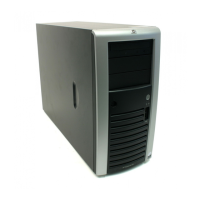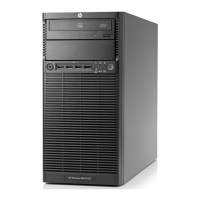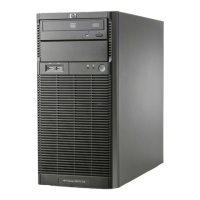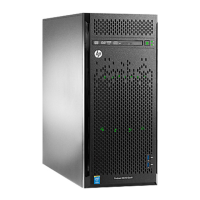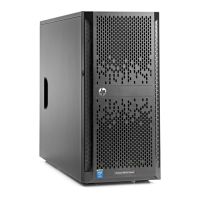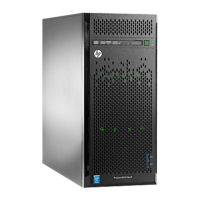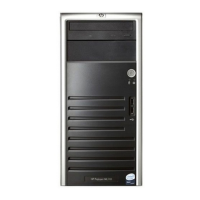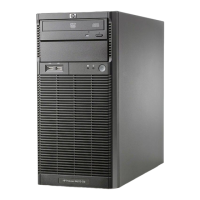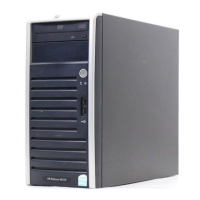Removal and replacement procedures 41
a.
Position the heatsink on the processor backplate
b. Tighten the four corner screws completely to secure the heatsink in place.
c. Connect the fan cable to the system board.
3. Install the access panel.
4. Return the server to an upright position.
5. Connect the power cord to the server.
6. Connect the power cord to the power source.
7. Press the Power On/Standby button.
The server exits standby mode and applies full power to the system. The system power LED changes
from amber to green.
Processor
The server supports single processor operation.
WARNING: To reduce the risk of personal injury from hot surfaces, allow the drives and the
internal system components to cool before touching them.
CAUTION: To avoid damage to the processor and system board, only authorized personnel
should attempt to replace or install the processor in this server.
IMPORTANT: If installing a processor with a faster speed, update the system ROM before
installing the processor.
To remove the component:
1. Press the Power On/Standby button.
The server powers down and enters standby mode. The system power LED changes from green to
amber. Power is still applied to the server.
2. Disconnect the power cord from the power source.
3. Disconnect the power cord from the server.
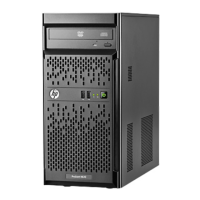
